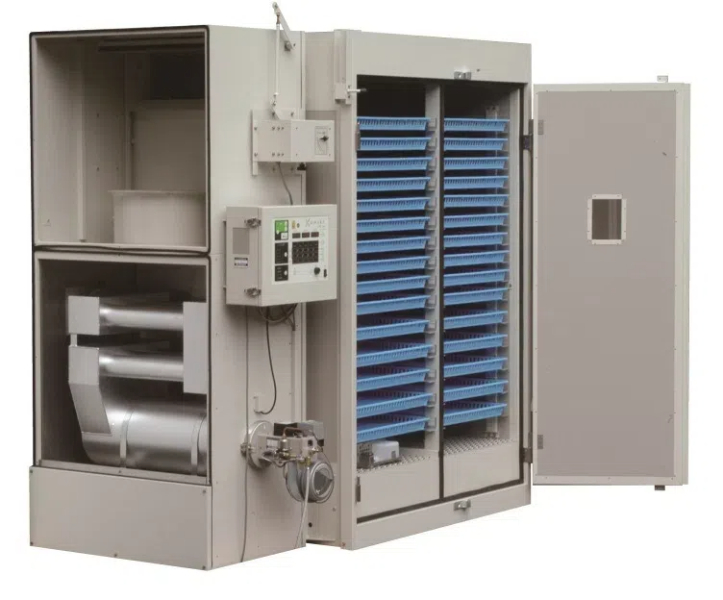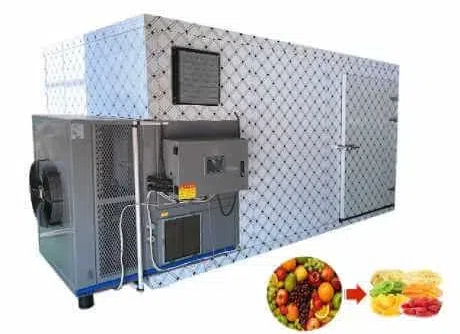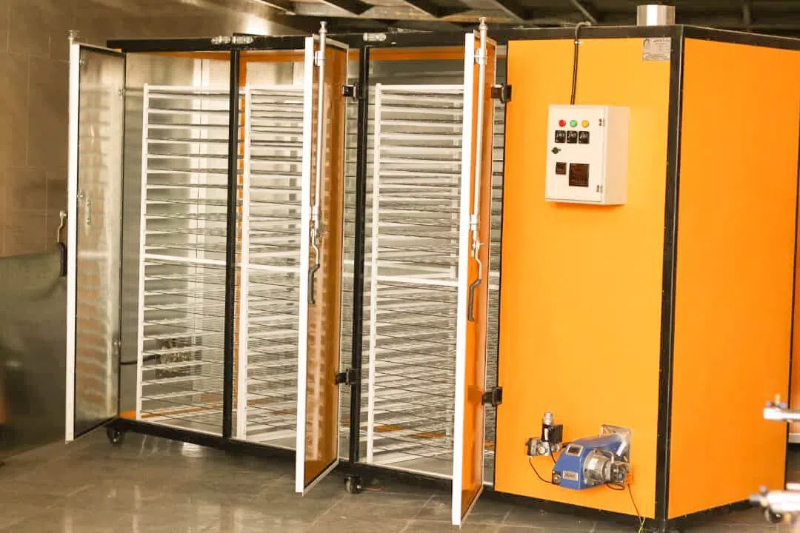
Content Menu
● Understanding Food Dehydration: The Science and Art
● Types of Food Dehydrators: Choosing the Right Tool for the Job
● Key Components of a Food Dehydrator: Understanding the Machinery
● Achieving Perfect Drying Results: Step-by-Step Guide
● Special Considerations for Different Food Types
● Innovative Drying Technologies: The Future of Dehydration
● Troubleshooting Common Issues: Addressing Challenges
● OEM Services for Food Dehydrators: A Strategic Partnership
● Conclusion
● FAQ
>> 1. What is the ideal temperature for drying fruits and vegetables?
>> 2. How long does it typically take to dehydrate food?
>> 3. How do I prevent fruits from browning during dehydration?
>> 4. Can I dehydrate meat in a food dehydrator?
>> 5. What are the benefits of using a food dehydrator with a dual drying system (DDS)?
● Citations:
Food dehydration is a preservation method with a history that spans centuries, yet it remains strikingly relevant today. The appeal lies in its simplicity, efficiency, and the incredible versatility it offers for preserving and transforming food. Whether you're a seasoned brand owner, a wholesaler looking to expand your product line, or a manufacturer seeking innovative production techniques, understanding the ins and outs of food dehydration is essential. This comprehensive guide dives deep into the world of food dehydrators, offering practical advice, expert tips, and advanced techniques to help you consistently achieve perfect drying results.

Understanding Food Dehydration: The Science and Art
At its essence, food dehydration is about removing moisture from food to inhibit the growth of microorganisms that cause spoilage. By lowering the water activity, you create an environment where bacteria, yeasts, and molds struggle to survive. But dehydration is more than just preservation; it's a transformation that intensifies flavors, concentrates nutrients, and creates unique textures.
Why Dehydrate Food?
- Extended Shelf Life: Dehydration dramatically extends the shelf life of perishable items, reducing waste and increasing availability.
- Intensified Flavors: As water evaporates, the natural sugars and compounds in food become more concentrated, resulting in richer, more intense flavors.
- Reduced Weight and Volume: Ideal for hikers, campers, and anyone looking to minimize storage space.
- Nutrient Preservation: When done correctly, dehydration can preserve a significant portion of the nutrients found in fresh foods, making it a healthy preservation option.
- Versatile Applications: Dehydrated foods can be used in a wide range of applications, from snacks and ingredients to emergency food supplies.
Types of Food Dehydrators: Choosing the Right Tool for the Job
Selecting the appropriate food dehydrator is paramount for achieving consistent and high-quality results. Different types of dehydrators offer varying degrees of efficiency, control, and capacity.
- Horizontal Airflow Dehydrators (Shelf Style): These are considered the gold standard for even drying. A rear-mounted fan circulates air horizontally across the shelves, ensuring consistent temperatures throughout the unit. Ideal for large batches and diverse food types.
- Vertical Airflow Dehydrators (Stackable): Typically more compact and affordable, these dehydrators feature a fan at the base or top, forcing air vertically through stackable trays. Rotation of the trays is often necessary to ensure even drying.
- Solar Food Dehydrators: An environmentally friendly option that harnesses the power of the sun. While reliant on weather conditions, solar dehydrators can be highly effective in sunny climates. Direct solar dryers expose food directly to sunlight, while indirect dryers separate the solar collector from the food chamber for better temperature control.
Key Components of a Food Dehydrator: Understanding the Machinery
A food dehydrator is more than just a box with a fan. Each component plays a crucial role in the drying process.
- Heating Element: Provides the necessary heat for evaporation. The quality and precision of the heating element directly impact the consistency of drying.
- Fan and Motor: Circulates hot air throughout the dehydrator. The fan's power and design determine the airflow pattern and drying efficiency.
- Thermostat: Regulates the temperature inside the dehydrator. Precise temperature control is essential for preserving nutrients and preventing scorching.
- Air Vents: Control the airflow and moisture removal. Proper ventilation is crucial for efficient drying and preventing condensation.
- Food Trays: Hold the food during the drying process. The material, design, and spacing of the trays influence airflow and drying consistency.
Achieving Perfect Drying Results: Step-by-Step Guide
1. Preparation is Paramount:
- Quality Selection: Start with the freshest, ripest, and highest-quality produce available.
- Thorough Cleaning: Wash all food thoroughly to remove dirt, debris, and any potential contaminants.
- Uniform Slicing: Cut food into uniform slices to ensure even drying. Aim for slices that are consistently 1/8 to 1/4 inch thick. A mandoline slicer can be helpful for achieving consistent results.
- Pre-Treatment Techniques: Some fruits and vegetables benefit from pre-treatment to prevent oxidation, retain color, and enhance flavor. Options include:
- Acid Dip: Soaking fruits in a solution of lemon juice or ascorbic acid (Vitamin C) helps prevent browning.
- Blanching: Briefly steaming or boiling vegetables can deactivate enzymes that cause discoloration and nutrient loss.
- Sulfuring: A traditional method involving exposure to sulfur dioxide, which is effective but less common due to potential health concerns.
2. Loading the Dehydrator: Maximizing Airflow:
- Single-Layer Arrangement: Arrange food in a single layer on the trays, ensuring that pieces do not overlap or touch.
- Optimal Spacing: Leave adequate space between pieces to allow for proper air circulation. Overcrowding the trays can lead to uneven drying and prolonged drying times.
- Weight Considerations: Be mindful of the dehydrator's weight capacity to prevent damage to the unit.
3. Temperature and Time: The Art of Balance:
- Optimal Temperature Ranges: The ideal drying temperature depends on the type of food. Generally:
- Fruits: 130°F (54°C) to 135°F (57°C)
- Vegetables: 125°F (52°C) to 130°F (54°C)
- Meats: 155°F (68°C) to 160°F (71°C)
- Herbs: 95°F (35°C) to 115°F (46°C)
- Drying Time Variability: Drying times can vary significantly based on food type, slice thickness, humidity, and dehydrator efficiency. Expect a range of 4 to 24 hours or more.
- Regular Monitoring: Check the food regularly throughout the drying process. Adjust temperature and time as needed to achieve the desired level of dryness.
4. Advanced Drying Techniques: Elevating Your Results:
- Tray Rotation: Rotate trays periodically, especially in vertical airflow dehydrators, to ensure even drying.
- Airflow Optimization: Ensure proper airflow by keeping vents clear and the dehydrator positioned away from walls and obstructions.
- Staging: Remove trays of food as they become fully dried, rather than waiting for all trays to be finished.
- Conditioning: After drying, allow the food to cool completely and then place it in an airtight container for a week. This "conditioning" period allows any remaining moisture to redistribute, preventing mold growth.

Special Considerations for Different Food Types
- Herbs: Dry herbs on low heat (95-115°F) to preserve their delicate essential oils and flavor.
- Jerky: Use lean meats and marinate them thoroughly before drying for optimal flavor and preservation. Ensure the meat reaches a safe internal temperature (160°F) to kill bacteria.
- Fruits: Pre-treat fruits with an acid dip to prevent browning and enhance color.
- Vegetables: Blanching vegetables before drying can help retain their color, texture, and nutrients.
Innovative Drying Technologies: The Future of Dehydration
- DDS (Dual Drying System): Dehydrators equipped with a Dual Drying System utilize two sensors to monitor both dry-bulb and wet-bulb temperatures, enabling precise control of relative humidity. This results in more efficient drying, superior product quality, and reduced energy consumption.
- Vacuum Drying: This method dries food under reduced pressure, lowering the boiling point of water and allowing for faster drying at lower temperatures. Vacuum drying preserves more nutrients and flavors compared to traditional methods.
- Microwave-Assisted Drying: Combining microwave energy with traditional drying techniques can significantly reduce drying times and improve product quality. The microwave energy heats the food internally, promoting faster evaporation.
Troubleshooting Common Issues: Addressing Challenges
- Uneven Drying: Ensure food is sliced uniformly, trays are rotated regularly, and the dehydrator is properly ventilated.
- Case Hardening: Reduce the temperature or increase airflow to prevent the outside of the food from drying too quickly, which can trap moisture inside.
- Mold Growth: Ensure food is dried thoroughly to a moisture content below 20%. Proper storage in airtight containers is also essential to prevent mold growth.
OEM Services for Food Dehydrators: A Strategic Partnership
For foreign brands, wholesalers, and manufacturers looking to enter or expand in the food dehydration market, partnering with a reliable OEM (Original Equipment Manufacturer) in China offers numerous advantages.
- Cost-Effective Production: Manufacturing in China can significantly reduce production costs due to lower labor and material expenses.
- Scalable Manufacturing: Access to large-scale production capabilities to meet the demands of growing markets.
- Customization Options: OEM services allow for complete customization of dehydrators to meet specific brand requirements, including design, features, and branding.
- Quality Assurance: Implementing rigorous quality control processes ensures that products meet international standards and customer expectations.
Conclusion
Mastering food dehydration is a journey that requires dedication, experimentation, and a commitment to quality. By understanding the principles of dehydration, selecting the right equipment, and implementing effective techniques, you can consistently achieve perfect drying results. For foreign food dehydrator brands, wholesalers, and manufacturers, leveraging the expertise and cost-effectiveness of a reputable OEM provider in China can be a strategic advantage for success in this dynamic and growing market.

FAQ
1. What is the ideal temperature for drying fruits and vegetables?
The ideal temperature for drying most fruits and vegetables is around 130°F (54°C). However, it's essential to consult specific guidelines for each type of food to ensure optimal results, as some delicate items like herbs require lower temperatures.
2. How long does it typically take to dehydrate food?
Drying times vary significantly depending on the type of food, thickness of slices, and the dehydrator's efficiency. It can take anywhere from 4 hours to 24 hours or more.
3. How do I prevent fruits from browning during dehydration?
To prevent fruits from browning, you can pre-treat them with lemon juice, ascorbic acid, or a quick blanch before placing them in the dehydrator.
4. Can I dehydrate meat in a food dehydrator?
Yes, you can dehydrate meat to make jerky. It's crucial to use lean meats and marinate them for added flavor and preservation. Ensure the meat reaches a safe internal temperature to kill bacteria.
5. What are the benefits of using a food dehydrator with a dual drying system (DDS)?
A food dehydrator with a DDS uses two sensors to detect dry-bulb and wet-bulb temperatures, allowing for precise control of humidity. This can result in better quality dried foods and significant energy savings.
Citations:
[1] https://itpo-tokyo.unido.org/en/technology_db/6436/
[2] https://patents.google.com/patent/CN110207480A/zh
[3] https://www.fox-foodprocessinginabox.eu/drying-technologies/
[4] https://patents.google.com/patent/CN1405396A/zh
[5] https://www.ikemachinery.com/food-drying-machine/
[6] https://patents.google.com/patent/CN109252340A/zh
[7] https://en.wikipedia.org/wiki/Food_dehydrator
[8] https://patents.google.com/patent/CN1110593C/zh











